Fauna[]
Mammals[]
The Curious Wildcat[]
The Curious Wildcat is indigenous to the islands located in the north east of the world map, usually living the heavily forested areas. The body of a Curious Wildcat is larger than that of a common household cat with a male’s body being able to reach half a metre in length and a tail length of up to 30 cm. Their coats of thick fur are usually light brown with either spots or stripes but never both. They can be often found in groups.
As the old saying goes “curiosity killed the cat” however this couldn’t be further from the truth in the case of this small beast, as they seem to spend their whole life exploring and sniffing around what they don’t know. Often found following humans at a safe distance, the Curious Wildcat will take note of the humans every move, everything the human touched, everything the human looked at, the Curious Wildcat will sniff around it, trying to figure out why it appealed to the human.
If a person attempts to approach a Curious Wildcat, they’ll find that they like to run away, though never far, as it is sure to be too curious to leave the human alone and will soon be back to following them. Curious Wildcats are not usually aggressive creature, although if cornered it may lash out before running off.
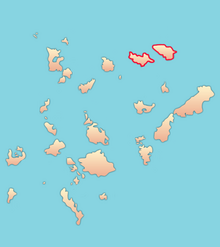
The Stone Marten[]
The Stone Marten is a strange creature found in the islands to the north. It has an oblong body that can reach up to 40cm in length with a tail length of almost 30cm. While its legs are indeed short, it is an excellent climber thanks to their small cat like claws. Their light beige body is in contrast to their dark coloured limbs. These creatures are not very social and are mostly found alone, except during mating season where pairs are the norm.
The Stone Marten is indeed very strange, as no one has ever seen one move directly, hence their name Stone Marten. Once a Stone Marten is seen, it freezes and doesn’t move at all until it is sure the gaze upon it has moved. The only time a human has seen a Stone Marten move is when it has tricked the creature into thinking that they aren’t looking, usually via not looking at them directly. Reflections are a common way for humans to watch Stone Martens, and mirrors are often found in areas of pilgrimage where Stone Martens live. Stone Martens like to stay up on tree branches or high walls so humans have a hard time touching them if they are frozen still.
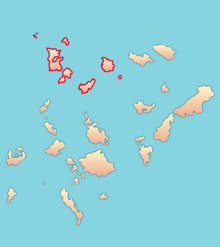
The Timid Wood Mouse[]
The Timid Wood Mouse is common rodent found amongst the eastern islands. Usually you can find these small creatures living in forests, farm land, scrubland and during winters, nesting in houses. Light brown in colour and only 10cm in length, this creature may be a little hard to find.
Due to their timid nature, it is incredibly hard for a human to find a Timid Wood Mouse and if found, it’s not long until they scuttle away in fear. Usually the Timid Wood Mouse can be found in small groups of between three to six however it is not unusual to see a lone one.
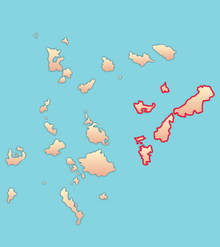
Reptiles[]
The Friendly Fruit Snake[]
The Friendly Fruit Snake is a medium sized snake which is normally found in the central islands. The Friendly Fruit Snake can reach up to 1.5 metres in length but is usually much smaller. The scales are usually yellow-ish brown in colour, with a distinctive head with prominent eyes and round pupils.
It is completely harmless for all other creatures and is in fact very friendly towards them, often trying to help humans out in some form. Found lying sunbathing, a human can easily approach one and feed it fruit and pet it as if it were a household pet. Unlike most snakes, this snake does not hunt and is a herbivore that solely lives off fruit.
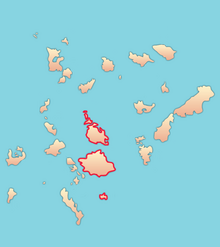
The Confused Gecko[]
The Confused Gecko is a small creature not that dissimilar in size to the Timid Wood Mouse. With an orange and pink coloured body, the Confused Gecko looks quite friendly, however a human that tries to approach one of these creatures will quickly realise why they are called the “confused” gecko.
The geckos will constantly bash themselves into objects as they run around and frequently injure themselves in the process. The Confused Gecko has an unique ability that allows them to detach their tails – which they often do in their confusion - as they run away, leaving the tail as a decoy. After this, the tail will regrow back in several minutes.
No one is sure to why the Confused Gecko is always confused but one myth speculates that due to their constant bashing of their heads, it simply comes down to having a memory span of a few seconds.
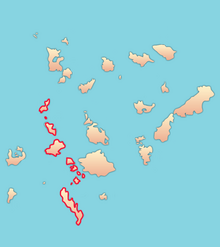
Avian[]
The Singing Partrdige[]
A beautiful bird situated in the western islands, the Singing Partridge is in stark contrast to the Noisy Gull although the phrase “you’ll hear them before you see them” is for a much more pleasant reason this time around. It is common to find these birds in pairs, flying from to tree to tree while singing.
The small bird is only around 30cm in size, its body is fat with a round shape. The beak and feet are red and it has two blue stripes beginning from the beak and passing over the two eyes and over its head. The wings are often grey or green.
These birds are non-migratory and thus are often isolated to the small islands in the west. This also means that the birds suffer from a lack of food during the winter, so humans often leave seeds out for them. They are monogamous birds that can often be found in couples with the babies following suit behind them. They love the sun and are common pets on the western islands.
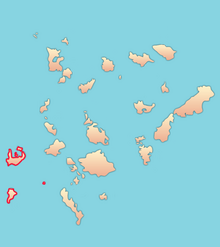
The Noisy Gulls[]
The most common avian throughout the world is the Noisy Gull. Found on every island in the archipelago, these noisy creatures can often be heard long before being seen. Usually the Noisy Gull will produce harsh wailing or squawking calls and can be found in groups as small as three, to numbers higher the ten, thus intensifying the noise.
These creatures are quite large for birds, measuring up to 60cm when standing, thus making them quite intimidating. Covered with white feather with some dark areas like on the tips of their wings, the Noisy Gulls are very distinguishable from other birds. These creatures have a nasty habit of trying to steal food out of people’s hands, so be weary when carrying fruit.
Aquarian[]
The Fearsome Sea Dragon[]
A creature that is feared amongst humans as it is said that this monster will drag you down to the depths of the deep blue sea to eat you, that is if someone was caught too far out at water without being on a boat. However, the creature has a bit of a misnomer as it’s a completely harmless herbivore. The story sprung from the humans not understanding that people were being dragged under the water due to the current.
A swift and agile creature, the Fearsome Sea Dragon is actually quite a majestic beast and they often peer their proud heads above the sea water, it is thought that these creatures do this to scout for any danger that might lurk ahead above the water despite the fact that their large stature means that they have few natural predators. Usually the Friendly Sea Dragon swims in schools of five or six members. Not much is known about their young or how their reproductive cycles as few have been seen by humans, it has been said that maybe these creatures are not native to these seas and are just passing through.
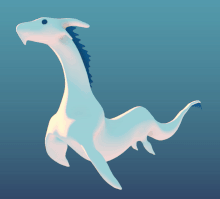
Modelled by Laura Smith, textured and animated by Dan.
Flora[]
Trees[]
Tamarisk Tree[]
An evergreen tree that is characterised by its thin branches and green foliage. Growing to a potential height of 18 metres, these trees can form dense foliage to provide suitable shade from the sun. The bark of this tree is of a dark brown colour and its flowers are commonly pink though white is not uncommon either.
Chestnut Tree[]
The chestnut tree has a thick trunk that can grow to 2 metres in diameter and potentially up to 50 metres in height, the bark of the tree is of a greyish tint. The green leaves from a chestnut tree are large and particularly veiny on its underside. The seeds are covered in a thick bur with spikes on it to protect in the inner nut. A chestnut is a popular food throughout the island and is commonly roasted.
Oak Tree[]
Oak trees are the ideal tree for timber throughout the archipelago and are often seen in tree farms. The trees can grow to a height of 20 metres. Oak Trees are also known to be one of the longest living trees and it is not uncommon for signs to be posted on oak trees stating their approximate age. Oak trees produce acorns as their seeds.
Shrubs[]
Lentisk[]
Lentisk is an evergreen shrub that grows to a maximum height of 5 metres though usually average out at around 2 or 3 metres. This shrub likes to grow in dry, rocky and salty environments, so it’s common to see them by the sea. The leaves grow on stems in groups of 5 or 6 leaflets and often has small flowers growing from the same stem. The plant produces stoned fruit that start of red by as they ripe, begin to turn black.
Thyme[]
Thyme is a small evergreen shrub with greyish, green leaves. Growing to upwards, on Thyme plant possesses many wood-like branching stems from which the leaves grow. The flowers that blossom from the plant are often pink or a very light shade of purple. Thyme is well sought after for its use as a condiment throughout the archipelago.
Fruit Plants[]
Strawberry Plant[]
The Strawberry Plant is characterised by its low hanging red, sweet fruit, green leaves and white flowers. The fruit is popular throughout the islands and can be eaten fresh, used in desserts or juiced. Eaten in large quantities by both humans and animals alike, its not uncommon to see these plants in farms or with a Friendly Fruit Snake close by.
Apple Tree[]
Usually standing around 2 to 4 metres tall, the Apple Tree is another commonly farmed plant throughout the islands. They usually have dark green leaves and produce white flower with a pink tinge. The apple fruit produced can come in a variety of colours such as green, red, yellow and pink. Apples can range in flavours, though they are usually sweet or bitter and thus have a wide application of culinary uses throughout the island. Apple juice is a common drink given to children.
Olive Tree[]
The Olive Tree is an evergreen tree or small shrub that is commonly around 10 metres tall. The tree has silvery green leaves and a twisted trunk. The tree produces white flowers and fruit that can range in colours from purple to green, the olive fruit also contains a stone in the middle. The fruit is popular in salads and cooking with high quality olive oil fetching high prices at markets.
Flowers[]
Poppies[]
A flower popular for its medicinal purposes as a painkiller, this flower can be seen throughout most of the islands and those that don’t grow the flower often import them. The flowers have 4 to 6 petals each with many stamens and the petals can come in almost any colour though red seems to be the most common colour.
Daisies[]
A flower that is considered a weed by many and as ornamental by others, this flower appears anywhere and everywhere throughout the archipelago. The Daisy has white petals and yellow disc florets. It’s common for children to chain them together into bracelets or necklaces.
Tulips[]
A tall standing flower coming in a wide variety of bright colours. They have a relatively small number of leaves on their stems usually in the range of two to six. Tulips have 3 petals that form a bell shape and 3 sepals. The Tulips produce tiny fruit that contain its seeds. These plants are often found both in the wild in large groups or in gardens in an orderly fashion. These flowers are often given as presents to spouses or friends.